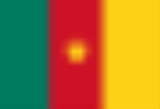
Oshie
Encyclopedia
Oshie is a small mountainous village covering approximately 70 square kilometers. It is located in the English
-speaking Northwest Province of Cameroon
. It is located to the east of Njikwa Sub-division in Momo
Division and forms a geographical gate way into Njikwa. Oshie is a land of rich physical diversity and presents an undulating landscape which is an extension of the Bamboutos Highlands of the Western Highlands of Cameroon. It is a centre of Garri
production.
of Cameroon are said to have originated from Mbeitong near Ntadkon in present day Mezam Division in the Northwest Province. These people were forced to migrate south because of the spread of Islam
in west and central Africa
. They then migrated in two waves; first through Oshum, Widikum and Ngie, the second through Njinibi and Frigyien.
English language
English is a West Germanic language that arose in the Anglo-Saxon kingdoms of England and spread into what was to become south-east Scotland under the influence of the Anglian medieval kingdom of Northumbria...
-speaking Northwest Province of Cameroon
Cameroon
Cameroon, officially the Republic of Cameroon , is a country in west Central Africa. It is bordered by Nigeria to the west; Chad to the northeast; the Central African Republic to the east; and Equatorial Guinea, Gabon, and the Republic of the Congo to the south. Cameroon's coastline lies on the...
. It is located to the east of Njikwa Sub-division in Momo
Momo (department)
Momo is a department of Northwest Province in Cameroon. The department covers an area of 1792 km² and as of 2001 had a total population of 213,402.The capital of the department lies at Mbengwi.-Subdivisions:...
Division and forms a geographical gate way into Njikwa. Oshie is a land of rich physical diversity and presents an undulating landscape which is an extension of the Bamboutos Highlands of the Western Highlands of Cameroon. It is a centre of Garri
Garri
Garri is a popular West African food made from cassava tubers. The spelling 'garri' is mainly used in Nigeria, Cameroon, Sierra Leone and 'gari' in Ghana....
production.
Population
2004 population projections placed the population of the village at 10,822 inhabitants. This population is structured into families that were born out of two principal families; Andek and Oyemi. Though the population is made up predominantly of indigenes, the society is ethnically and religiously pluralistic, yet very peaceful. Most of the inhabitants speak the Ngishe language, of which Oshie is the main centre. The village is structured into quarters with Nyebai, Beimban, Barimbom, Neucop, Fum, Fringyen and Bereje being the main quarters. They are further broken into sub quarters each under a quarter head.History
The present site was initially inhabited by the Konda and Beba people, who were driven out by the migrant Oshie people. Early settlement sites were places such as Tikob, Edek, and Togobeiku. These sites were chosen for defensive purposes, taking advantage of the strategic landscape. The people who make up part of the semi Bantu ethnic groupEthnic group
An ethnic group is a group of people whose members identify with each other, through a common heritage, often consisting of a common language, a common culture and/or an ideology that stresses common ancestry or endogamy...
of Cameroon are said to have originated from Mbeitong near Ntadkon in present day Mezam Division in the Northwest Province. These people were forced to migrate south because of the spread of Islam
Islam
Islam . The most common are and . : Arabic pronunciation varies regionally. The first vowel ranges from ~~. The second vowel ranges from ~~~...
in west and central Africa
Central Africa
Central Africa is a core region of the African continent which includes Burundi, the Central African Republic, Chad, the Democratic Republic of the Congo, and Rwanda....
. They then migrated in two waves; first through Oshum, Widikum and Ngie, the second through Njinibi and Frigyien.

